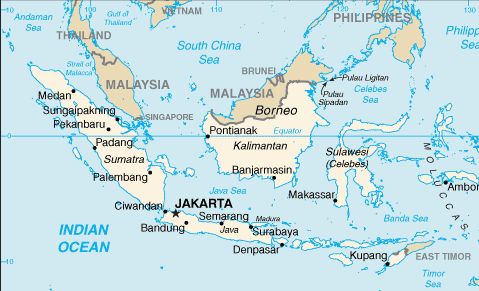|
INDONESIA
|
|
|
|
|
|
|
|
The largest economy in Southeast Asia, Indonesia – a diverse archipelago nation of more than 300 ethnic groups -- has charted impressive economic growth since overcoming the Asian financial crisis of the late 1990s. The country’s GDP per capita has steadily risen, from $857 in the year 2000 to $3,603 in 2016. Today, Indonesia is the world’s fourth most populous nation, the world’s 10th largest economy in terms of purchasing power parity, and a member of the G-20. An emerging middle-income country, Indonesia has made enormous gains in poverty reduction, cutting the poverty rate to more than half since 1999, to 10.9% in 2016.
Indonesia’s economic planning follows a 20-year development plan, spanning from 2005 to 2025. It is segmented into 5-year medium-term plans, called the RPJMN, each with different development priorities. The current medium-term development plan – the third phase of the long-term plan -- runs from 2015 to 2020, focusing, among others, on infrastructure development and social assistance programs related to education and health-care. Such shifts in public spending has been enabled by a reform of long-standing energy subsidies, allowing for more investments in programs that directly impact the poor and near-poor.
At a glance:
|
Country Name
|
Republic of Indonesia
|
|
Area
|
1,904,569 sq.km
|
|
Capital
|
Jakarta
|
|
Government type
|
Republic
|
|
Administrative divisions
|
32 provinces and 1 special regions and 1 national capital city district
|
|
National Holiday
|
Independence Day, 17 August
|
|
Fiscal year
|
January to December
|
|
Currency
|
Indonesian Rupiah (IDR)
|
|
President
|
Joko WIDODO (since 20 October 2014)
|
|
Population
|
260,580,739 (July 2017 est.)
|
|
Net migration rate
|
-1.1 migrant(s)/1,000 population (2017 est.)
|
|
GDP (purchasing power parity)
|
$3.032 trillion (2016 est.)
|
|
GDP- composition by sector
|
Agriculture: 13.7%
Industry: 40.3%
Services: 46% (2016 est.)
|
|
Agriculture- Products
|
Rubber and similar products, palm oil, poultry, beef, forest products, shrimp, cocoa, coffee, medicinal herbs, essential oil, fish and its similar products, and spices
|
|
Industries
|
Petroleum and natural gas, textiles, automotive, electrical appliances, apparel, footwear, mining, cement, medical instruments and appliances, handicrafts, chemical fertilizers, plywood, rubber, processed food, jewelry, and tourism
|
|
Major Exports
|
Mineral fuels, animal or vegetable fats (includes palm oil), electrical machinery, rubber, machinery and mechanical appliance parts.
|
|
Major Exports - Partners
|
Japan 12%, US 10.8%, China 10%, Singapore 8.4%, India 7.8%, South Korea 5.1%, Malaysia 5.1% (2015)
|
|
Major Imports
|
Mineral fuels, boilers, machinery, and mechanical parts, electric machinery, iron and steel, foodstuffs.
|
|
Major Importers - Partners
|
China 20.6%, Singapore 12.6%, Japan 9.3%, Malaysia 6%, South Korea 5.9%, Thailand 5.7%, US 5.3% (2015)
|
|
Natural resources
|
Petroleum, tin, natural gas, nickel, timber, bauxite, copper, fertile soils, coal, gold, silver.
|
|
Languages
|
Bahasa Indonesia (official modified form of Malay), English, Dutch, local dialects (of which the most widely spoken in Japanese).
|
|
Ethnic groups
|
Javanese 40.1%, Sundanese 15.5%, Malay 3.7%, Batak 3.6%, Madurese 3%, Betawi 2.9%, Minangkabau 2.7%, Buginese 2.7%, Bantenese 2%, Banjarese 1.7%, Balinese 1.7%, Acehnese 1.4%, Dayak 1.4%, Sasak 1.3%, Chinese 1.2%, other 15% (2010 est.)
|
|
Climate
|
Tropical; hot, humid; more moderate in highlands.
|
|
Location
|
South Eastern Asia, archipelago between the Indian ocean and the pacific ocean
|

